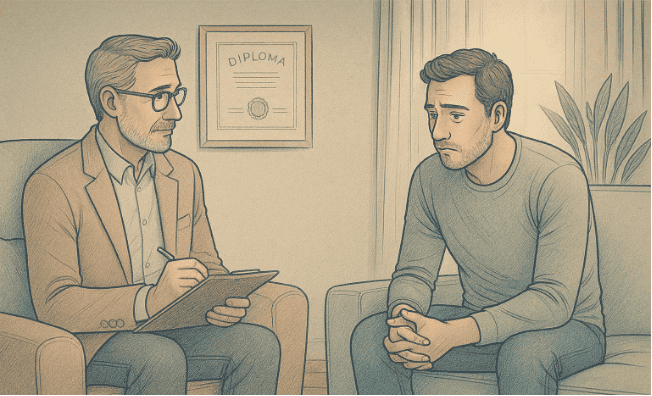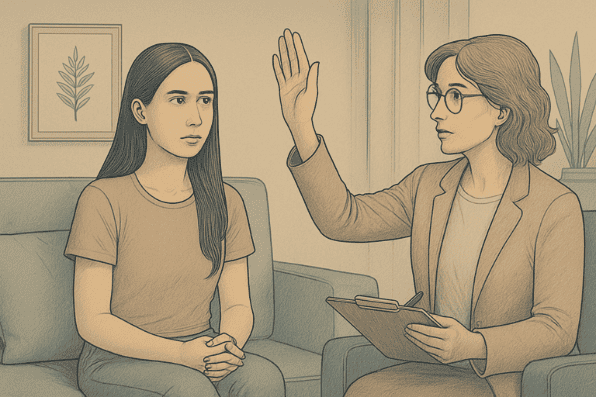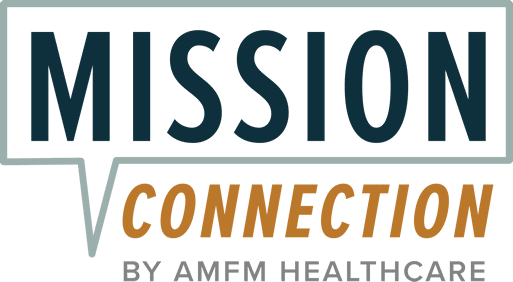
Key Takeaways
- EMDR therapy has proven to be as effective as Cognitive Behavioral Therapy for treating anxiety disorders, often working faster than traditional methods.
- The therapy uses bilateral stimulation to help the brain process traumatic memories without the emotional distress that typically accompanies them.
- Research shows EMDR can significantly reduce anxiety symptoms in just 3–12 sessions, making it an efficient treatment option.
- Finding a properly certified EMDR therapist is crucial for treatment success and safety during the processing of difficult memories.
- Mission Connection Healthcare offers certified EMDR therapy with properly trained clinicians who specialize in anxiety disorders, providing comprehensive assessment, various program intensities from outpatient to residential care, and coordinated treatment planning.
What Makes Anxiety So Debilitating for Millions
Anxiety isn’t just excessive worry—it’s a complex condition that can completely derail your life. Nearly 40 million American adults struggle with anxiety disorders, making them the most common mental health conditions in the country. What makes anxiety particularly challenging is how it operates on multiple levels simultaneously, affecting your thoughts, emotions, behaviors, and physical health.
Unlike occasional nervousness, clinical anxiety doesn’t easily respond to logical thinking or reassurance. The mind becomes trapped in cycles of catastrophic thinking and fear responses that feel impossible to escape. Many people describe it as knowing their fears are irrational while feeling powerless to stop them, like watching yourself spiral downward but being unable to grab the brakes.
The persistent nature of anxiety creates a frustrating paradox: the more you try to fight anxious thoughts, the stronger they often become. This resistance creates what therapists call “secondary suffering” not just the original anxiety, but additional layers of shame, frustration, and hopelessness about having anxiety in the first place.
When Traditional Treatments Fall Short
While conventional anxiety treatments help many people, they don’t work for everyone. Cognitive Behavioral Therapy (CBT) requires considerable practice and homework to rewire thought patterns. Medication can cause side effects ranging from weight gain to sexual dysfunction, and some patients develop tolerance over time.
Both approaches often require substantial time commitments before seeing significant improvement, which can be discouraging when anxiety is severely impacting your quality of life. For those seeking alternatives, Eye Movement Desensitization and Reprocessing (EMDR) for anxiety is a promising option by addressing both the psychological and physiological aspects of the condition.
Mission Connection offers flexible outpatient care for adults needing more than weekly therapy. Our in-person and telehealth programs include individual, group, and experiential therapy, along with psychiatric care and medication management.
We treat anxiety, depression, trauma, and bipolar disorder using evidence-based approaches like CBT, DBT, mindfulness, and trauma-focused therapies. Designed to fit into daily life, our services provide consistent support without requiring residential care.
How EMDR Actually Works for Anxiety Disorders
EMDR therapy operates on the principle that many anxiety disorders stem from inadequately processed traumatic memories. When distressing experiences aren’t fully integrated into your memory network, they remain “frozen” in the nervous system, triggering anxiety responses long after the danger has passed.
EMDR helps your brain reprocess these memories so they no longer cause the same emotional distress when recalled.
The 8 Phases of EMDR Treatment

EMDR treatment begins with history-taking and preparation phases where your therapist helps you develop emotional regulation skills and establishes a foundation of trust. These initial phases are crucial for ensuring you have the necessary coping mechanisms in place before processing potentially difficult material.
The core of EMDR treatment occurs during the desensitization, installation, and body scan phases. Here, you’ll briefly focus on targeted memories while engaging in bilateral stimulation. Throughout this process, your brain naturally moves toward resolution, often making unexpected connections between current anxiety symptoms and past experiences.
The final phases involve evaluating your progress and ensuring the traumatic material has been fully processed. Your therapist will help you integrate your new perspectives and coping skills into everyday life, ensuring that improvements gained during sessions translate to lasting anxiety reduction in real-world situations. This methodical approach is one reason EMDR shows lower relapse rates compared to some other anxiety treatments.
Understanding Bilateral Stimulation: The Key Mechanism
The hallmark of EMDR therapy is bilateral stimulation—alternating attention between the right and left sides of the body while processing difficult memories. This can be achieved through side-to-side eye movements, alternating taps on the knees or hands, or audio tones that switch between ears. This bilateral component appears to help the brain process information more effectively, similar to the way REM sleep helps consolidate memories during dreaming.
Bilateral stimulation activates both hemispheres of the brain simultaneously, facilitating communication between emotional and logical brain regions. For those with anxiety, this integration is crucial, as anxiety often involves a disconnect between rational understanding (“I know I’m safe”) and emotional experience (“I feel terrified”). The bilateral component of EMDR helps bridge this gap, allowing emotional and rational perspectives to align.
Is EMDR Right for Your Anxiety?

Ideal Candidates for EMDR Treatment
EMDR tends to be most effective for people whose anxiety can be linked to specific memories or experiences, even if those connections aren’t immediately obvious. If you’ve experienced identifiable traumas like accidents, assaults, losses, or childhood adversity that preceded your anxiety symptoms, EMDR may help resolve these underlying issues.
Additionally, people who haven’t responded well to traditional cognitive approaches sometimes find EMDR particularly helpful. If you’ve tried challenging your anxious thoughts through CBT but still experience strong emotional and physical anxiety responses, EMDR’s body-centered approach might address these symptoms more effectively.
When EMDR May Not Be the Best Option
EMDR may not be ideal for everyone with anxiety. If your anxiety symptoms are primarily driven by current life stressors rather than past experiences, other approaches like Cognitive Behavioral Therapy (CBT) or mindfulness-based interventions might be more appropriate initial treatments.
Similarly, if you’re currently experiencing severe dissociation or acute psychiatric crisis, these conditions should be stabilized before beginning trauma processing work.
Questions to Ask Before Starting Therapy
Before beginning EMDR for anxiety, it’s helpful to have a candid conversation with your potential therapist about what to expect. Ask about their specific training in EMDR, including whether they’ve completed the full EMDRIA-approved basic training and any advanced training specific to anxiety disorders. Experienced therapists should be able to explain how they would adapt the standard EMDR protocol to address your particular anxiety symptoms.
Discuss the practical aspects of treatment, including estimated session length, frequency, and duration of the overall treatment course. While EMDR often works faster than traditional therapies, the exact timeline varies based on the complexity of your anxiety and its underlying causes. Understanding these expectations can help you prepare practically and emotionally for the commitment involved.
Mission Connection Healthcare’s Evidence-Based EMDR Approach for Anxiety Recovery
At Mission Connection Healthcare, our certified EMDR therapists bring specialized expertise in treating anxiety disorders. We understand that not every anxiety presentation is suitable for EMDR, which is why our comprehensive assessment process ensures you receive the most appropriate treatment from the start.

Our integrated care model coordinates EMDR therapy with psychiatric services when needed, offering various program intensities from outpatient to residential care across our California, Virginia, and Washington state locations.
With free confidential assessments, insurance verification support, and flexible treatment programs, our experienced clinicians can efficiently help you recover from anxiety symptoms that have resisted other interventions, helping you reclaim your life from the grip of trauma-based anxiety.
Contact Mission Connection Healthcare today to discover if EMDR therapy could be the breakthrough approach your anxiety treatment has been missing.
Call Today 866-833-1822.
Frequently Asked Questions
How quickly does EMDR show results for anxiety compared to other therapies?
EMDR typically produces noticeable anxiety reduction within 3–6 sessions for single-incident trauma, and 12–20 sessions for complex anxiety presentations. This is significantly faster than traditional talk therapy, which may require months of weekly sessions.
The rapid results occur because EMDR directly addresses how traumatic memories are stored in the brain rather than just managing surface symptoms.
Can I do EMDR if I’m already taking anxiety medication?
Yes, EMDR therapy can be safely combined with anxiety medications and often works more effectively when patients have medication-supported stability. Many people successfully complete EMDR while continuing their prescribed medication regimens.
Your EMDR therapist should coordinate with your prescribing physician to ensure both treatments complement each other. Some patients eventually reduce medication as EMDR resolves underlying trauma, but any medication changes should always be supervised by your doctor.
What happens if I become overwhelmed during an EMDR session?
EMDR therapists are trained in specific protocols to help patients regain emotional stability if processing becomes overwhelming. The initial preparation phases teach grounding and self-soothing techniques before any memory processing begins.
If distress levels become too high during a session, your therapist can use containment techniques to help you feel safe before ending the session.
How do I know if my anxiety is suitable for EMDR treatment?
EMDR works best for anxiety that can be linked to specific memories or experiences, even if those connections aren’t immediately obvious. If your anxiety features intrusive thoughts, flashbacks, nightmares, or is triggered by situations reminiscent of past trauma, EMDR may be particularly beneficial.
A qualified EMDR therapist will conduct a thorough assessment to determine if your anxiety presentation is suitable for this approach or if other treatments might be more appropriate initially.
How does Mission Connection Healthcare ensure quality EMDR treatment for anxiety disorders?
Mission Connection Healthcare employs certified EMDR therapists who possess specific experience treating anxiety disorders. Our clinicians coordinate care with psychiatrists for integrated treatment approaches and offer various program intensities from outpatient to residential settings.
We provide free confidential assessments to determine if EMDR is appropriate for your specific anxiety presentation, work with most major insurance providers, and offer ongoing support throughout your treatment journey across our California, Minnesota, Washington state, and Virginia locations.








